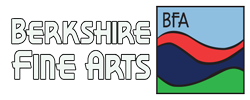Finding Clarity in The Now
Taiji, Meditation, and the Art of Presence
By: Cheng Tong - May 14, 2025
In our busy lives, the mind often wanders. It drifts back to replay past events, sometimes tinged with regret, other times viewed through the rosy lens of nostalgia. Or, it races ahead, consumed by planning, anticipation, or anxiety about what might come. We shuttle between yesterday and tomorrow, frequently missing the only time that truly exists, the only place we ever truly are: the present moment. Yet, it is within this very moment – the eternal “now” – that life unfolds in its full richness and potential. Practices like Taiji and meditation serve as invaluable anchors, gently guiding us back to this present awareness, offering a path to clarity, peace, and authentic living.
The goal is to cultivate a state of present moment awareness where we engage fully with what is, unfiltered by the layers of judgment, expectation, and predisposition that so often cloud our perception. Judgment assigns labels of “good” or “bad,” “right” or “wrong,” preventing us from seeing things simply as they are. Expectation dictates how we believe things should be, leading to disappointment or frustration when reality differs. Predisposition compels us to react based on ingrained habits and past conditioning, rather than responding freshly to the unique circumstances before us. When we inhabit the present moment free from these filters, we perceive reality with remarkable clarity.
Taiji, often described as meditation in motion, is a profound practice for cultivating this presence. Its slow, deliberate movements demand our full attention. To perform the form correctly, we must be acutely aware of our physical structure, the distribution of weight, the coordination of limbs, and the quality of our breath. There is no room for a wandering mind; to be balanced and fluid in Taiji is to be fully present in the body, right here, right now. This echoes the principles of Push Hands, where sensitivity to the present moment is paramount. One cannot rely on preconceived plans or brute force; instead, one must remain supple and receptive, sensing the partner’s intention and energy (Qi) in real-time, yielding and redirecting without resistance. This requires abandoning habitual, forceful reactions (predispositions) and meeting the moment with open awareness. The constant interplay of mind, body, and breath anchors us firmly in the immediate experience.
Meditation, in its stillness, offers a complementary path. By focusing on the breath or simply observing the flow of thoughts, feelings, and sensations without attachment, we train the mind to become a clear mirror. We learn to recognize judgments, expectations, and habitual thought patterns as they arise, not as absolute truths, but as transient mental events. We practice letting them go, returning again and again to the anchor of the present. This doesn’t mean emptying the mind of thought, but rather cultivating an empty quality – a state of openness and receptivity, unburdened by mental clutter.
From this state of clear presence, a remarkable shift occurs in how we interact with the world. When we see a situation without the distortion of judgment or expectation, its true nature becomes apparent. And from this clarity, the appropriate response often arises spontaneously, effortlessly, from within. It’s not a calculated decision based on past formulas or future desires, but an intuitive action perfectly suited to the present conditions – much like the Taiji practitioner responding fluidly or water finding its natural course. This is the essence of Wu Wei, or effortless action, born not from passivity, but from profound alignment with the moment.
When we approach each moment with this open awareness, we begin to perceive its inherent perfection and completeness. This doesn’t imply every moment is pleasant or easy, but rather that it is fully and completely what it is, offering a unique, unrepeatable constellation of experiences and possibilities. Embracing the moment as it is, without wishing it were different, dissolves internal resistance and struggle. It allows us to engage with life directly, learning, adapting, and flowing with what arises.
Ultimately, these practices reveal a fundamental truth: anywhere is here, and anytime is now. The conceptual boundaries we erect between places and times dissolve in the face of direct experience. The only point of power, the only time for living, is this present moment. By grounding ourselves in the here and now through Taiji and meditation, we move beyond the grip of judgment, expectation, and predisposition. We discover a profound clarity, allowing wise and compassionate responses to flow naturally, transforming our relationship with ourselves, with others, and with life itself. This is the path to living fully, awake to the infinite potential held within each unfolding moment.
Walk though the door of each moment to find your tranquil lake of great clarity and full presence, as depicted on the image above.

